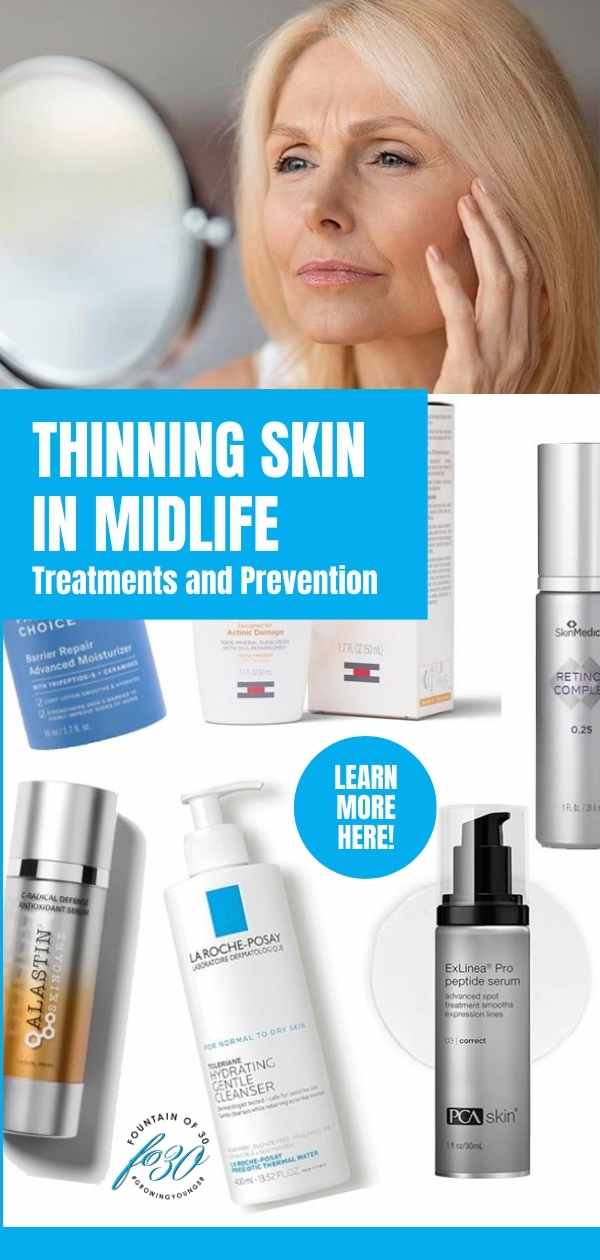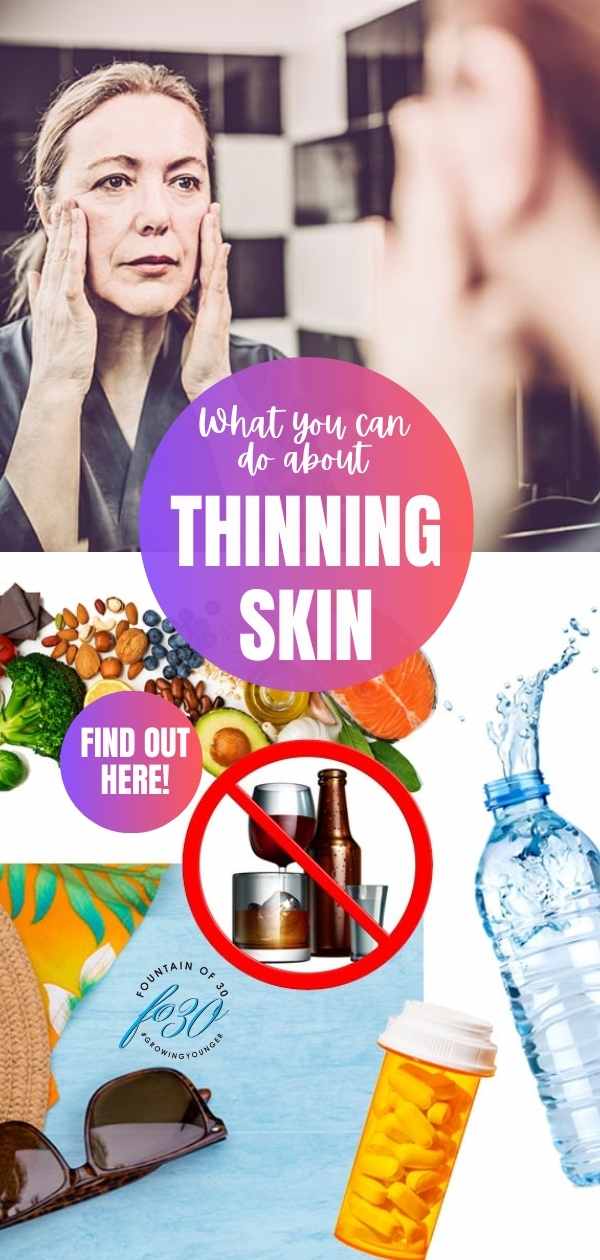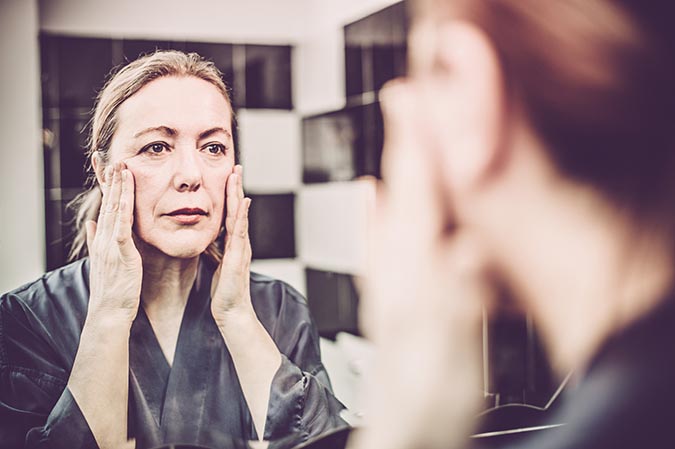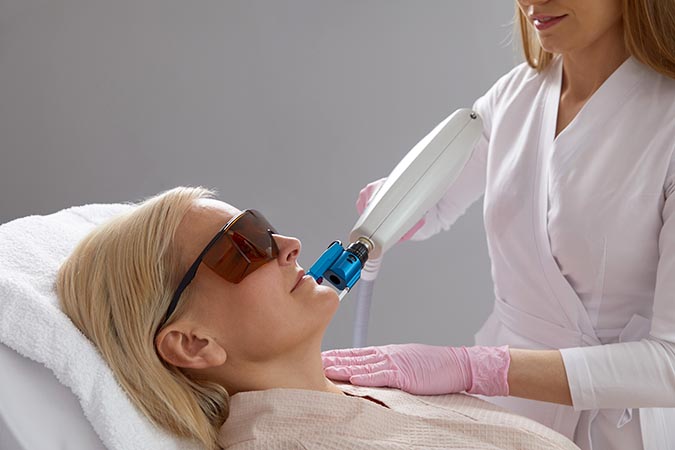Argh! The dreaded aging thinning skin. It’s different than sagging skin (which is equally as annoying). I’ve really begun to notice it under my eyes and on my hands lately. My mom had thinning skin and I had hoped I would inherit my dad’s skin, but alas here we are.
What Causes Thinning Skin?
As we age, the skin cells in the epidermis become thinner, and the number of pigment-containing cells, called melanocytes, decreases. This results in a paler, more translucent appearance of aging skin. Additionally, the blood vessels in the dermis become more fragile over time.
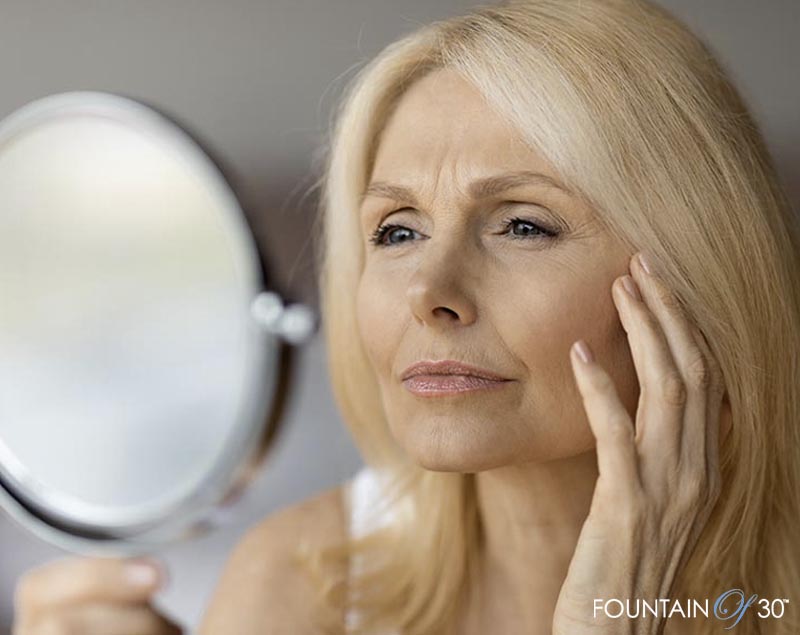
YES! I LOOK FORWARD TO #GROWINGYOUNGER
PLEASE SUBSCRIBE ME TO YOUR MAILING LIST.
The Differences Between Thinning, Crepey and Saggy Skin
So what’s the difference between thinning, crepey and saggy skin? They are different conditions that all result from aging, but they have distinct characteristics and causes:
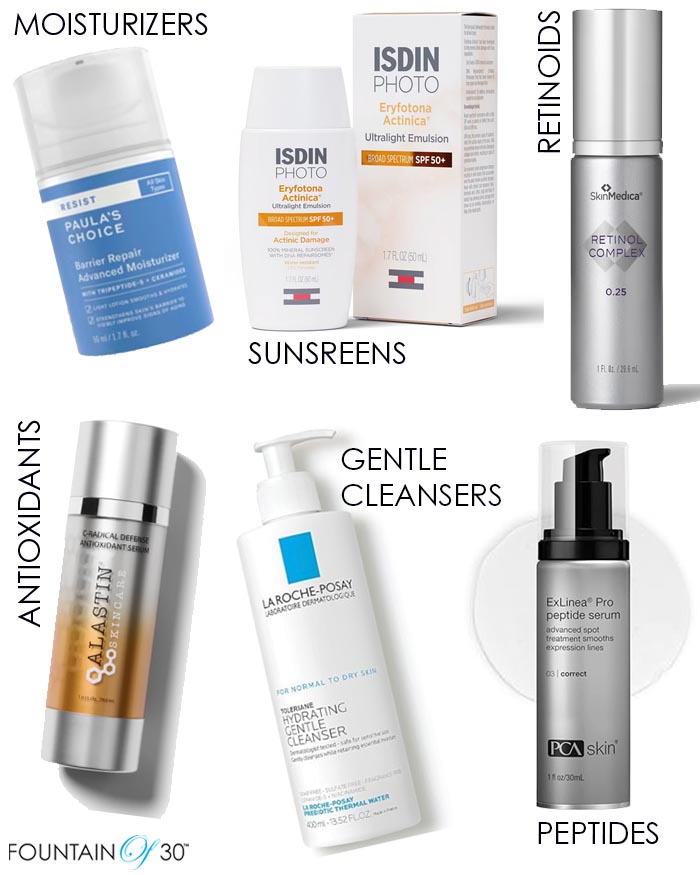
Skincare Routine
Moisturizers: Use rich, hydrating moisturizers to help maintain your skin’s moisture barrier. Look for ingredients like hyaluronic acid, ceramides and glycerin.
Sunscreens: Protect your skin from UV damage by applying a broad-spectrum sunscreen with at least SPF 30 daily, even on cloudy days. Don’t forget your hands either.
Retinoids: Incorporate retinoids (vitamin A derivatives) into your skincare routine to stimulate collagen production and improve skin thickness. Start with a lower concentration to avoid irritation and gradually increase as your skin tolerates it. The more you can tolerate, the better.
Antioxidants: Use products every morning containing antioxidants like vitamin C, vitamin E, and niacinamide to protect the skin from environmental damage and support collagen production.
Gentle Cleansing: Stick with mild, non-foaming cleansers to avoid stripping the skin of its natural oils.
Peptides: Look for skincare products containing peptides, which can help boost collagen and elastin production.
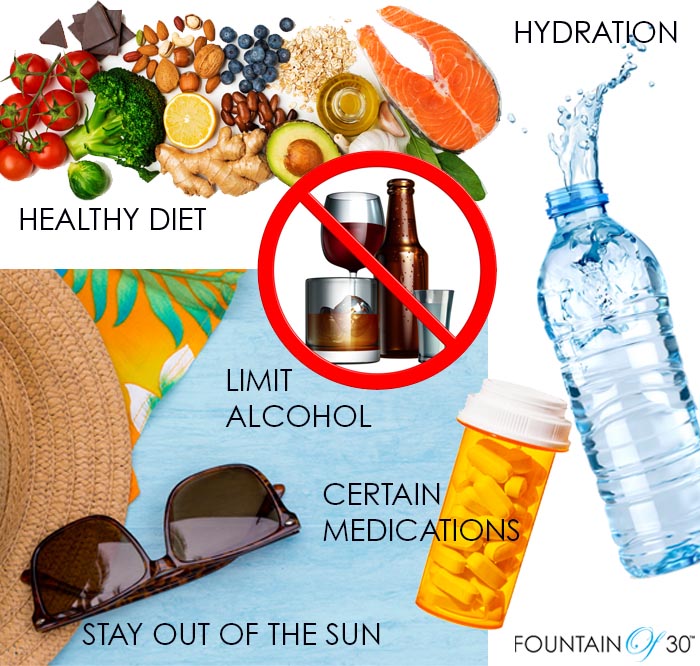
Lifestyle Changes
- Healthy Diet: Eat a balanced diet rich in antioxidants, vitamins and minerals to support overall skin health. Foods high in vitamins A, C, and E, as well as omega-3 fatty acids, are particularly beneficial as well as eating enough protein. This keeps muscles firm which helps bolster the skin. Basically if you stick to a mostly Mediterranean Diet (eating based on the traditional dietary patterns of countries bordering the Mediterranean Sea, such as Greece, Italy and Spain. It’s associated with lower risks of heart disease, stroke and certain cancers) it will be better for your health and skin.
- Hydration: It goes without saying you need to drink plenty of water to keep your skin hydrated from the inside out. How much do you need? It depends on your weight, the temperature and how much activity you are doing. Try this calculation: Take your weight and multiply it by 2/3 (0.67). So If you are 140 lbs., you should be drinking 94 ounces per day (just under 12 cups).
- Limit Alcohol: Talking about dehydrated skin…reduce alcohol consumption, as it can dehydrate the skin and contribute to thinning. I will add smoking here too, but I hardly know anyone who smokes anymore.
- Stay Out Of The Sun: Sun exposure and genetics all play a huge role in thinning skin.
- Certain Medications: Medications such as long-term use of corticosteroids, also can weaken the skin and blood vessels in the skin. Thin skin isn’t necessarily a sign of an underlying medical condition.
Professional Treatments
This is an overview of the type of treatments you could try. Please consult with your plastic surgeon or dermatologist before doing any of these.
Laser Therapy:
Laser treatments can help stimulate collagen production and improve skin texture and thickness. Treatments include: BBL with Moxy, Fraxel Laser, CO2 Laser Resurfacing (very aggressive), Clear + Brilliant, Nd Laser, Erbium Laser Resurfacing, PicoSure and more new laser treatments are popping up regularly.
Microneedling:
This treatment involves using fine needles to create micro-injuries in the skin, stimulating collagen production and improving skin thickness. Treatments include: Morpheus8, Vivace, DermaFrac, SkinPen and more.
Chemical Peels:
Regular chemical peels can help remove dead skin cells and promote the growth of new, thicker skin. Treatments include: Glycolic Acid Peel, Salicylic Acid Peel, TCA (Trichloroacetic Acid) Peel, Retinol Peel and Lactic Acid Peel.
Dermal Fillers:
Fillers can help restore volume and improve the appearance of thinning skin. Treatments include; Hyaluronic Acid Fillers like Juvederm and Restylane; Calcium Hydroxylapatite Fillers like Radiesse: Polymethyl Methacrylate (PMMA) Fillers like Bellafill and a few others.
The one filler that is probably the best and safest is fat grafting and more and more doctors are now offering it. Why? The results are more natural because fat integrates seamlessly with the surrounding tissues. Also by using your own tissue there is minimal risk of allergic reactions or rejection, which can sometimes occur with synthetic fillers. Lastly, fat grafting can provide long-lasting or even permanent results. Some of the transferred fat is reabsorbed by the body, but the remaining fat cells typically survive and provide lasting volume.
Platelet-Rich Plasma (PRP) Therapy:
This treatment uses your own blood’s platelets (blood) to stimulate collagen production and enhance skin thickness. Treatments include; PRP Microneedling, The Vampire Facial, PRP with Dermal Fillers, PRP with Radiofrequency and PRP with Exosomes.
Hormone Replacement Therapy:
Ask your doctor about HRT. Postmenopausal women are particularly vulnerable to thinning skin. Estrogen replacement has been clinically shown to enhance skin thickness.
Are you experiencing thinning skin?

Read some of my other anti-aging beauty posts like Splurge Vs. Steal: The Best Anti-Aging Skincare Edition and 11 Of The Best Hair Serums & Why You Need To Try One.
Photos: iStock
This post contains affiliate links which may give us a commission at no additional cost to you.
Are you following Fountain Of 30 on Facebook, Twitter, Instagram and Pinterest? We’ve got lots going on, so join in on the fun! Subscribe to our newsletter here. You don’t want to miss a post and promise not to bug you to death. Join our Facebook Group called Growing Younger where women discuss everything good and bad about being over 50. Additionally Lauren hosts a bi-weekly podcast called Beauty is a Bitch! and an Instagram Live series called “Growing Younger Gabfest with Lauren.”
Please pin!
